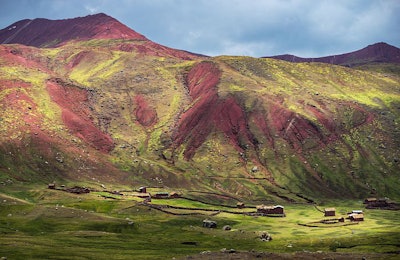
Pet food formulations now include the ancient grain quinoa (Chenopodium quinoa), following human superfood trends. Dog, cat and other pet owners, especially millennials, want more than just nutrition from novel pet food ingredients, though. Increasingly, pet food ingredients must meet social and environmental sustainability criteria. While the nutritional benefits of quinoa may be straightforward, the economic and cultural factors related to the cultivation of quinoa hold complexities.
Quinoa as a pet food ingredient
Quinoa provides 14% more protein and 8% more dietary fiber than standard wheat, according to representatives from ADM at Petfood R&D Showcase. Although popularly called an ancient grain, quinoa is a “pseudo-cereal,” wrote Greg Aldrich, PhD, in Petfood Industry’s Ingredient Issues column. As a novel pet food protein, quinoa has an amino acid profile more similar to soy than to corn or wheat, with relatively high levels of lysine and arginine.
Learn more about pet food ingredient sustainability:
Pet food companies now use quinoa for its nutritional value and superfood reputation, along with helping that brand stand out from competitors. For example, Lucy Pet dedicates an entire page of their website to tell pet owners why the company uses quinoa, stating: “Quinoa is not commonly used in pet foods because it is an expensive ingredient, and the mainstream ‘big companies’ focus on more commonly used ingredients to control their costs.”
Regardless of the current global popularity, for much of human history, quinoa stayed close to home. The protein-rich seeds are gluten-free and grow in harsh environments where other crops fail. Farmers in the highlands on the western slopes of the Andes Mountains domesticated the plant. Descendants of those domesticators have grown quinoa for thousands of years.
Yet the crop remained largely unknown outside its homeland. Then, around 2004, international gourmands suddenly felt a craving for quinoa. The rapid rise of quinoa on the international food scene upended the economy in some regions of the Andes.
Economics of quinoa as human and pet food ingredient
Between 2005 and 2013, Peru and Bolivia increased exports of quinoa seven-fold, reported the North American Congress on Latin America (NACLA). The price of quinoa ballooned 600% in that time, and international media, such as the Guardian and the New York Times, began reporting that small-scale Andean quinoa farmers could no longer afford to eat their own harvests. The public opinion pendulum eventually swung the other way, as Towson University economists documented that the quinoa boom had indeed boosted the income of farmers in traditional quinoa producing regions.
The United Nations even declared 2013 the International Year of Quinoa. However, after 2014, the price of quinoa dropped dramatically. The sudden popularity of the crop had led farmers in fertile coastal regions of Peru to plant quinoa. These large-scale farmers had shunned the crop for centuries.
Like many plants domesticated by indigenous people, Spanish invaders often considered quinoa to be fit for only poor people and livestock. So, for much of the colonial era, quinoa held little prestige or value, despite its high protein relative to other crops. Indigenous quinoa farmers persisted on the dry, climatically temperamental high plains, or altiplano, where wheat and other conquistador crops would not grow well.
After the price boom, quinoa was no longer a plant pariah. The production of quinoa on coastal farms dwarfed the harvests from subsistence farms in the altiplano, according to NACLA. What’s more, at least fifteen other countries, including Italy, India and China, started producing quinoa. Quinoa’s price collapsed under this increased production. Andean farmers found themselves back in the centuries old rut of poverty. Now, the Bolivian government spearheads an effort to establish geographical indication for varieties of quinoa, much like Champagne or Roquefort cheese, from the UN’s World Intellectual Property Organization.


















